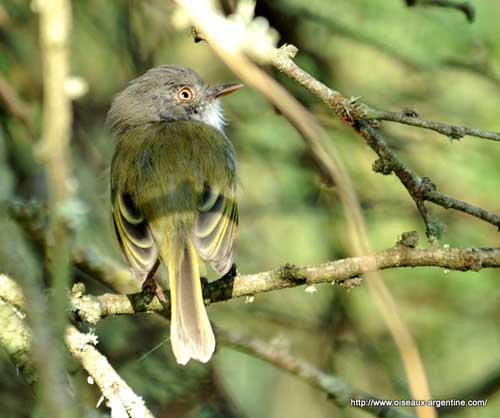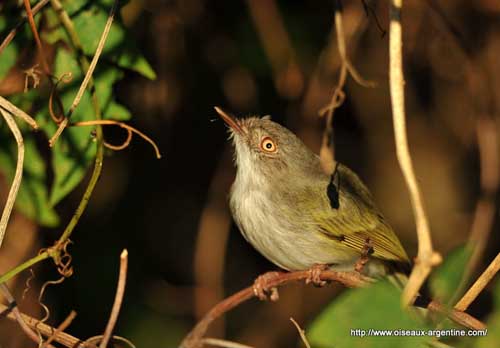
Fr: Todirostre à ventre perle
All : Perlbauch-Todityrann
Esp: Titirijí Perlado
Ital: Tiranno todo ventre di perla
Nd: Witbuiktodietiran
Sd: Pärlbukad todityrann
Port: Sebinho-de-olho-de-ouro
Photographers :
Philippe et Aline Wolfer
GALERIE
Texte de Nicole Bouglouan
Sources :
HANDBOOK OF THE BIRDS OF THE WORLD Vol 9 - by Josep del Hoyo - Andrew Elliot - David Christie - Lynx Edicions - ISBN: 8487334695
A GUIDE TO THE BIRDS OF COLOMBIA by Steven L. Hilty and William L. Brown - Princeton University Press – ISBN 069108372X
BirdLife International (BirdLife International)
Arthur Grosset's Birds (Arthur Grosset)
Pearly-vented Tody-Tyrant
Hemitriccus margaritaceiventer
Passeriforme Order – Tyrannidae Family
BIOMETRICS:
Length: 10-10,5 cm
Weight: 7-10 g
DESCRIPTION:
The Pearly-vented Tody-Tyrant is a Tyrannidae species included in the subfamily Elaeniinae, group Platyrinchini.
This group includes tiny flycatchers with fairly large bill regarding the small body.
The adult has drab plumage. The upperparts are greyish-brown to brownish-olive. Wings are dusky brown with buff-whitish to yellow edges to flight feathers and wingbars. The tail is dusky.
The underparts are white with weak pale greyish streaking.
The head shows grey crown and whitish lores and eyering.
The fairly long bill has darker upper mandible, mostly reddish-brown to blackish, whereas the lower one is pinkish-brown or fleshy-coloured. The eyes are pale yellowish-white, surrounded by red-orange “bloodshot”. Legs and feet are pale pinkish.
Both sexes are similar. The juvenile is not described, but it is probably duller than adults.

There are several subspecies, some of them much darker such as “breweri” and “duidae”. Others are very similar to the nominate race here described and displayed, with more or less grey or brown, and variable streaking on the underparts.
VOICE: SOUNDS BY XENO-CANTO
The Pearly-vented Tody-Tyrant utters series of sharp notes followed by musical trill falling in pitch “tick-tick-tr’r’r’r’r’r’r”. Some staccato notes can be given alone. It also gives short, nasal trill, and soft frog-like buzz.
While foraging, it frequently utters loud “tuk-tuk-quéek, quéek” call notes, or 2-4 “quéek” notes, usually higher-pitched than the previous ones.
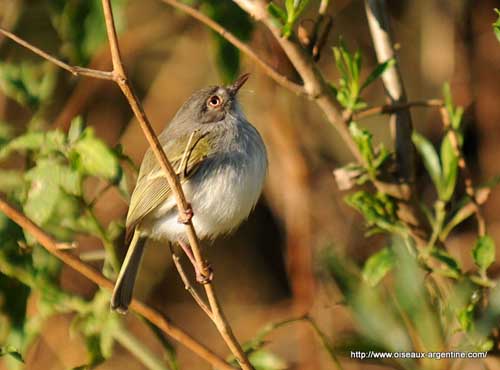
HABITAT:
The Pearly-vented Tody-Tyrant usually frequents shrubby pastures, arid or semi-arid scrubs, dry forests and lower growth of deciduous woodlands.
This species may occur from sea-level to 2000 metres of elevation, but it is usually found below 1000 metres.
RANGE:
The Pearly-vented Tody-Tyrant is found in Argentina, Bolivia, Brazil, Colombia, Paraguay, Peru, Uruguay and Venezuela.
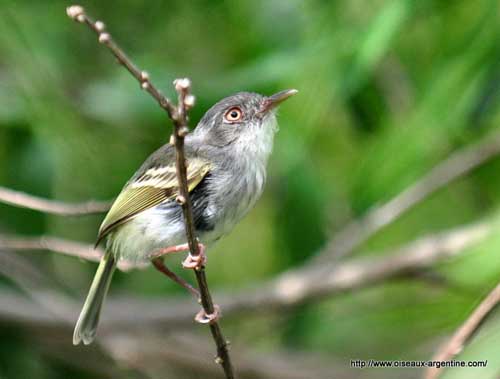
BEHAVIOUR:
The Pearly-vented Tody-Tyrant is an insect-eater. It can be seen alone or in pairs, foraging in shrubs and low trees, or very close to the ground. Its feeding behaviour involves short upwards strikes interspersed with short pauses. It gleans invertebrates from leaf undersides.
It hops among small twigs and foliage, perches for gleaning and flits up to the leaves. It also sallies to the air to catch flying insects.
Very secretive, this bird is difficult to see and remains hidden in the vegetation.
There is not information about the courtship displays, but this species occupies a fairly small permanent territory all year round, because it is resident in its range.
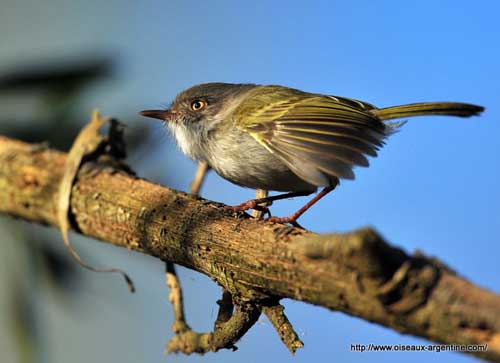
FLIGHT:
The Pearly-vented Tody-Tyrant performs only short-distance movements while foraging, flying between several perches or trees.
The birds of this group have the smallest and most rounded wings of any bird species, and for this reason, they perform limited dispersions.
REPRODUCTION:
The breeding season occurs between January and June in Colombia and from October to December in Peru, Bolivia and Argentina.
The Pearly-vented Tody-Tyrant builds an elaborated nest, as usual in Tyrannidae species. This is an elongated domed purse, with lateral entrance usually placed near the bottom. There is a canopy above this entrance.
The nest is made with dry grass blades, plant fibres and down. Inside, it is well lined with plant down.
Such nest is hanging from dropping tree-branch, shrub or herbaceous plant, between 50 cm and 3 metres above the ground.
The female lays 2-3 eggs, usually one or two. She incubates during 13-15 days. Chicks are fed by both adults, and fledge about 13-14 days later.
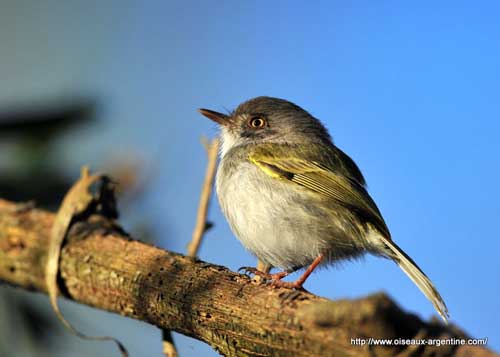
DIET:
The Pearly-vented Tody-Tyrant feeds on insects taken on the undersides of leaves, at lower to middle heights in vegetation.
PROTECTION / THREATS / STATUS:
The Pearly-vented Tody-Tyrant is fairly common throughout its range. The species is not currently threatened.
